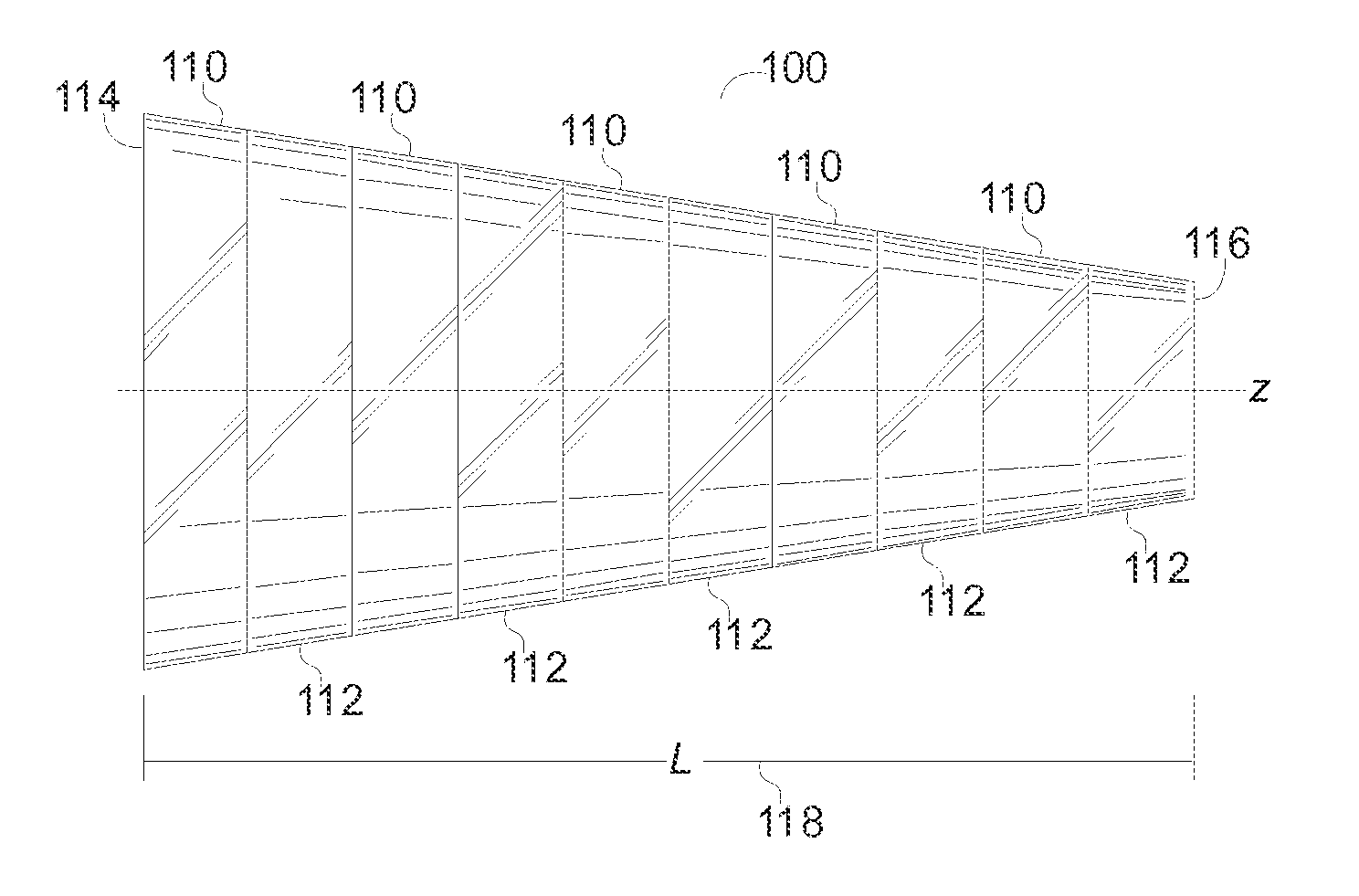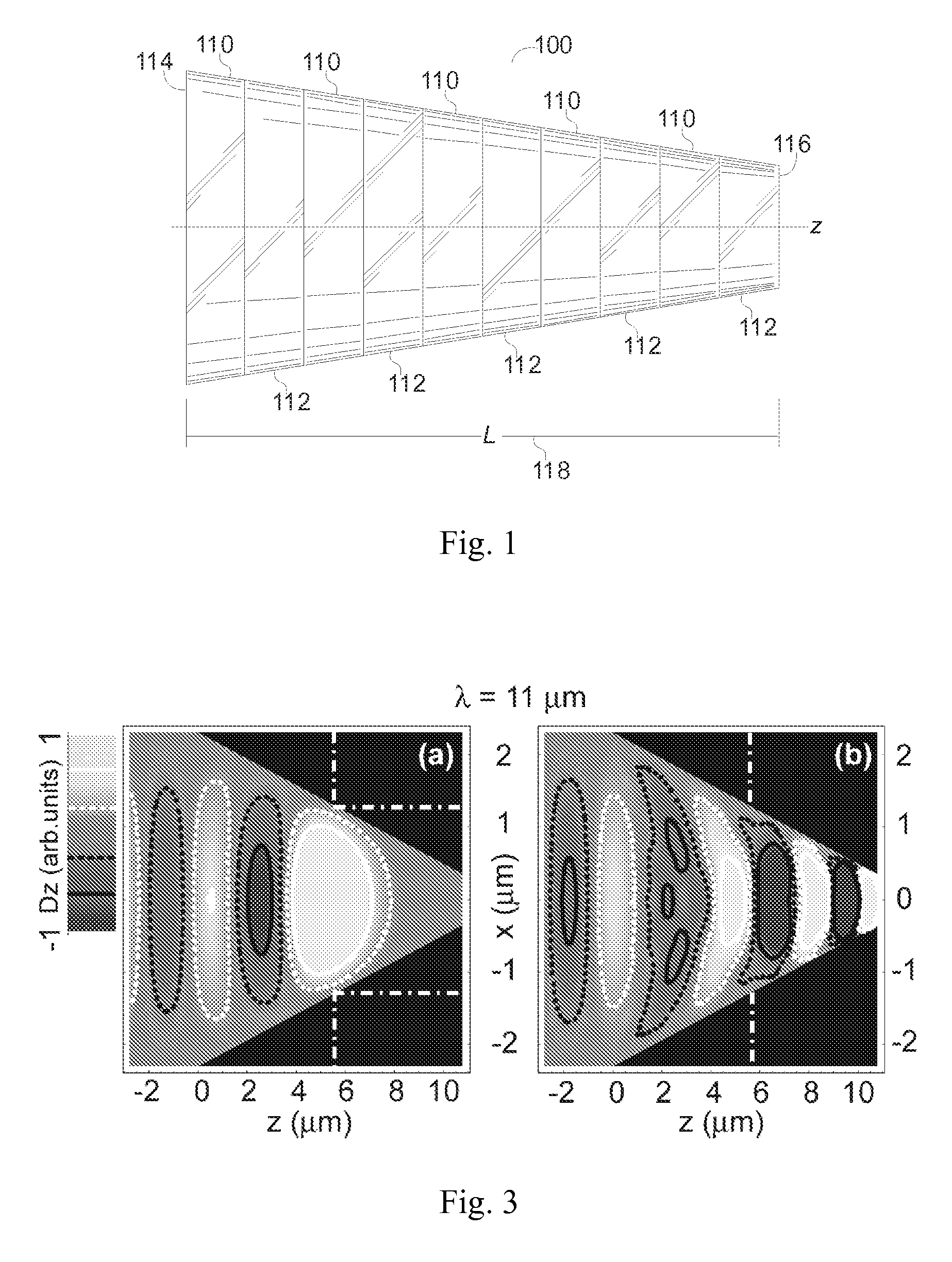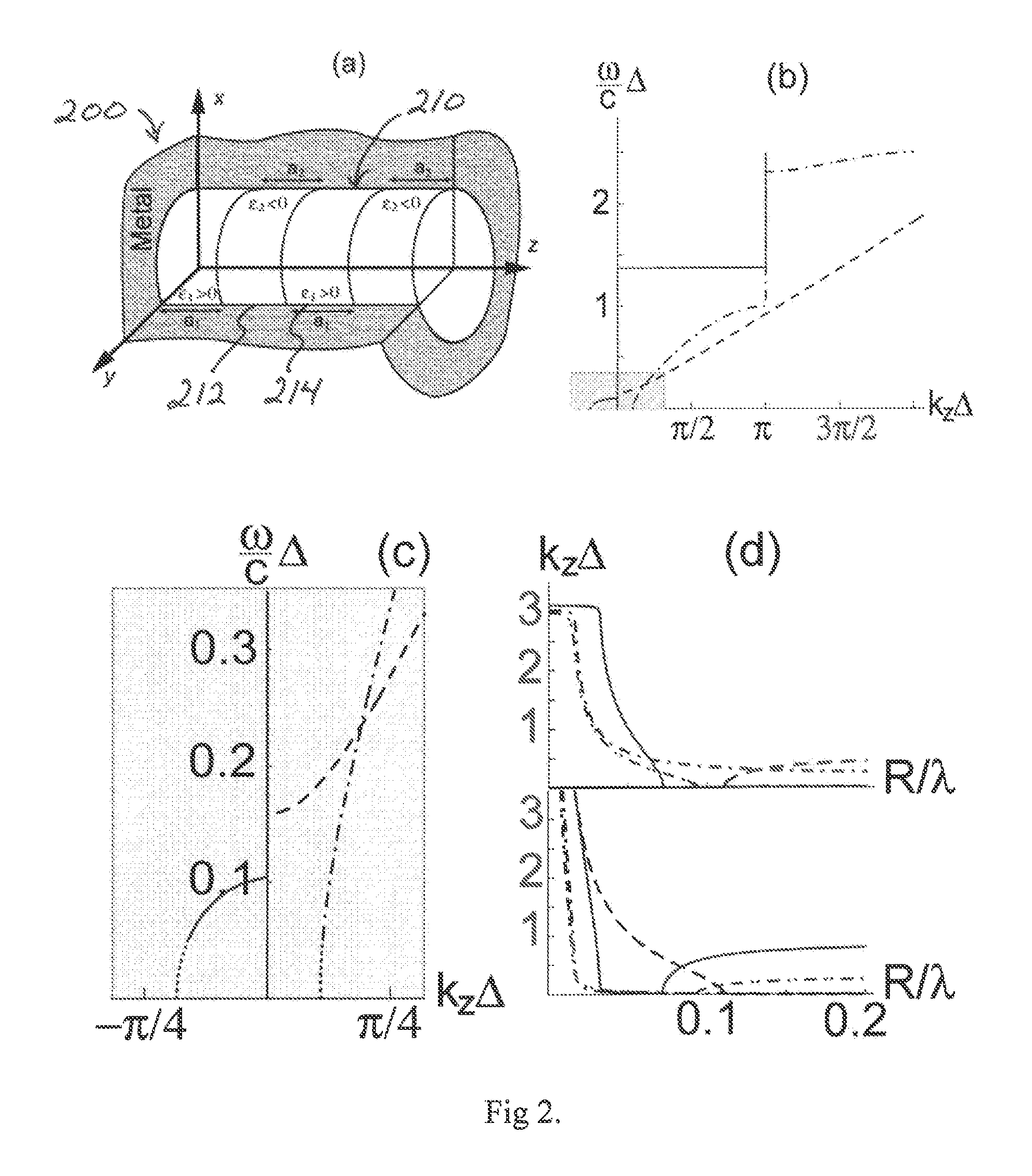Photonic funnels and anisotropic waveguides for subdiffraction light compression and pulse management at the nanoscale
a funnel and anisotropic waveguide technology, applied in the field of optical devices, can solve the problems of limiting the efficiency of coupling between nano- and micro-domains, limiting the resolution and sensitivity of near-field microscopes, and preventing the fabrication of ultra-compact all-optical processing circuits. , to achieve the effect of improving the efficiency of energy transfer and limiting energy
- Summary
- Abstract
- Description
- Claims
- Application Information
AI Technical Summary
Benefits of technology
Problems solved by technology
Method used
Image
Examples
Embodiment Construction
[0041]Referring now to the figures, the present invention provides a photonic funnel 100 for compressing light of a selected wavelength, λ, beyond the diffraction limit, FIG. 1. The photonic funnel 100 is able to compress light beyond the diffraction limit by inclusion of a plurality of material layers 110, 112 of differing dielectric constant oriented along the longitudinal axis of the photonic funnel with each layer having a thickness on the order of λ / 100, e.g., a metamaterial or a 1-D photonic crystal. For example, the plurality of material layers may comprise alternating layers of a dielectric (∈>0) material and a metallic (∈100 in accordance with the present invention includes a first funnel end 114 and a relatively smaller second opposing funnel end 116 to provide a tapered or optionally conical shape, with the second end having a cross-sectional dimension less than λ. In order to specify designs under which the light may be compressed to the sub-λ scale, analyses of wave pro...
PUM
 Login to View More
Login to View More Abstract
Description
Claims
Application Information
 Login to View More
Login to View More - R&D
- Intellectual Property
- Life Sciences
- Materials
- Tech Scout
- Unparalleled Data Quality
- Higher Quality Content
- 60% Fewer Hallucinations
Browse by: Latest US Patents, China's latest patents, Technical Efficacy Thesaurus, Application Domain, Technology Topic, Popular Technical Reports.
© 2025 PatSnap. All rights reserved.Legal|Privacy policy|Modern Slavery Act Transparency Statement|Sitemap|About US| Contact US: help@patsnap.com



